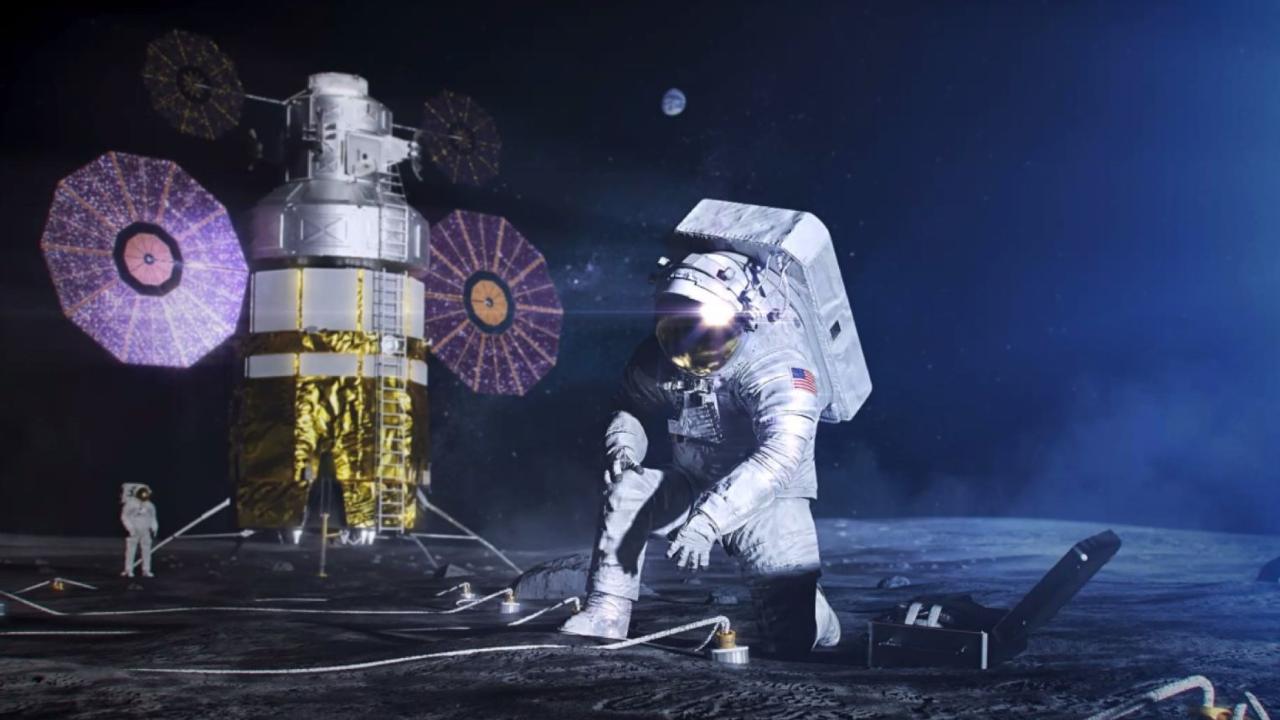With every passing week, it seems NASA has one more complication or reason to defer its targeted 2024 deadline for the upcoming human mission to the moon, Artemis. The most recent blow (unconfirmed by NASA) was that
**Congress might decide not to fund the mission** for the planned deadline. NASA’s enormous rocket-in-development, the
**Space Launch System** **(SLS)** , has fallen well behind schedule. History has been unkind to deep-space exploration programs since Apollo, which means that a lot rides on NASA’s Artemis mission
marking the start of a “moon rush” of sorts. Scientists John Connolly and Niki Werkheiser from NASA shared new details on the Artemis mission at the Lunar Exploration Analysis Group, an annual interdisciplinary forum in Washington, held on 30 October. Artemis seems far, far more complex than the agency’s earlier missions to the moon under the Apollo program,
according to Ars Technica. [caption id=“attachment_7584031” align=“alignnone” width=“1280”] Artist’s illustration of astronauts on the surface, installing a geophone. Image: NASA[/caption]
Crew of two and a week of sampling
Connolly reportedly told attendees that the first mission under Artemis to the Moon’s surface will consist of two crew members, who will study the surface of the moon for 6.5 days — double the longest time any of the Apollo astronauts spent on the surface. The pair of astronauts will carry out four space(moon)walks in total to make various science observations of the surface. Importantly, this will also include the first attempt to gather a sample of water-ice from lunar craters. The Artemis mission will also feature an unpressurized rover for astronauts to move around faster in. While this moon-mobile will come in very handy during spacewalks, NASA also intends for the rover to have remote control capability for astronauts to call on it without having to walk over to it each time.
NASA’s Space Exploration Vehicle
One of the concepts that NASA has in the works for a pressurized rover is the Space Exploration Vehicle (SEV), which essentially has a small, air-pressurized cabin mounted on a wheeled chassis that would allow easy mobile exploration on the moon or another planet. It can provide the astronauts’ main mode of transportation, and – unlike the unpressurized Apollo lunar rover – allows long excursions without the restrictions imposed by spacesuits. The final, in-space version of the vehicle also has a pressurized cabin on a flying platform, which will allow astronauts to live inside it for up to 14 days. The pressurized cabin also has a suitport, so the crew can get into their spacesuits and out of the vehicle more quickly, enabling multiple, short spacewalks instead of a single, long one. This will also give astronauts the mobility to explore multiple sites across the surfaces of the moon and Mars, and NASA the time to gather samples and study the surface in more detail than ever before. The two countries are also considering Japanese roles for lunar surface systems. Bridenstine said he and Yamakawa have discussed the Japanese development of a pressurized rover that could be used by astronauts on the lunar surface. JAXA is already studying the development of such a rover in cooperation with automaker Toyota.
While the SEV isn’t designed exclusively for moon missions, the SEV concept is a planned vehicle with the flexibility to drive on most, if not all, terrain and planetary surfaces. The main cabin for in-space missions is equipped for satellite servicing, telescope assembly, exploration of near-Earth asteroids as well as surface exploration on planets (mainly, the moon and Mars). It is also equipped with robotic arms to grasp objects for closer observation, and gives astronauts easy access to space via the suitports. The SEV will maximize the productivity of science missions on the moon, particularly spacewalks, outside of the cabin. Since the SEV is still in its developmental stages, NASA might opt for a **rover designed by JAXA and Toyota** for the early Artemis missions. Also Read: Toyota, JAXA to develop lunar rover that runs on fuel-cell tech for 2029 mission
By 2030, NASA says it could expand the Artemis crew to include four astronauts for 14-day missions to the moon. This will allow the agency to build new facilities — for mining, building, collecting water-ice, and producing oxygen. The companies that were awarded contracts to supply lunar landers for the Artemis mission have been mandated to provide NASA with 35 kg of capacity per lander to ferry back moon rocks, which is also extremely interesting to astrobiologists and astrophysicists alike. For NASA, the goal, according to Connolly, is to go to the Moon to stay, while also building up capabilities for eventual human missions to Mars. Also read: NASA unveils new, bunny-hop proof, astronaut spacesuits for its Artemis mission Also read: NASA may opt for inflatable habitats to house future missions to the moon, Mars and beyond


)
)
)
)
)
)
)
)
)



